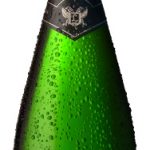
BRUT NATURE
“Bottle fermentation”. The varieties that constitute this champagne are 70% Pinot Noir and 30% Chardonnay. The grapes, carefully selected, come from our estates Santa Teresita and Canelli.
VINEYARD LOCATION
– Tupungato district, province of Mendoza.
– Maipú district, province of Mendoza.
CLIMATE | This privileged area has a particular micro-weather characterized by dry summers, warm and sunny days and cold nights. Grape development is favored by the thermal range, making them reach high concentration of aromas and excellent health.
SOIL | Alluvial silty-loam, shallow.
TRELLIS SYSTEM | Traditionally low espalier-trained vineyards. High cultivation density; low yield vines that, associated with the varietal purity, allow high quality grapes.
HARVEST | By hand, selecting the best clusters so as to have the best grapes for the winemaking. The harvesting moment depends on the grape ripening, a process that’s followed carefully to reach an optimum point with the highest aroma expression.
WINEMAKING | After their selection, the grapes are de-stemmed. This wine is made with the first free-run juice with no pressure applied, allowing to obtain characteristic and delicate aromas. Clear juice is fermented (no husks or sediments) at a controlled temperature (15 degrees Celsius). Selected yeast is used to have perfect must fermentation. After this process the juice undergoes clearing, low-temperature stabilization and filtering periods, to be able to blend the obtained wines in what is called the “base wine”.
SPARKLING WINEAKING | Traditional method or Champenoise. Once the base wine is obtained, a second fermentation takes place. For this, liqueur de tirage is added (selected yeast in full activity and sugar). This process takes place in the same bottles at a controlled temperature for 30 days, bottles are placed horizontally for fermentation. In this stage a very strict temperature control is needed. Temperature should not exceed 15 degrees Celsius so the bubbles are small, and in turn it will allow preserving the aromas generated during the process. The bottles are then placed for 12 months in racks, where the sparkling wine remains in contact with its own yeast to obtain the desired organoleptic characteristics. The bottles are daily rotated and titled slowly until the yeasts are deposited in their beak. This process gives it a fine varietal aroma and greater complexity to its flavor. Later the sediments gathered at the peak of the bottle are removed by means of cold temperatures. When uncapping it, the pressure ejects this yeast cap, thus obtaining the perfect clarity of the champagne. For its preservation, in the fermentation stage, “crown cap” is used, achieving an airtight cover preventing the entry of oxygen and its subsequent oxidation, maintaining intact its characteristics and qualities.
TASTING | Delicate aroma with notes of butter, toast and yeast. Pleasant foam and thin, persistent bubbles. In the mouth, it stands out for its structure and complexity. It is suggested to drink it at a temperature between 6 and 8 degrees Celsius.
PRESENTATION
– 750 milliliters bottles.
– Wooden chests: 1 x 750 milliliters bottles + 2 glasses, 2 x 750 milliliters bottles and 6 x 750 milliliters bottles.
ANALYTICAL DATA
Alcohol 12.1%
Sugar 4.2 g/l.
Volatile Acidity 0.3 g/l. in acetic acid
Total acidity 4.69 g/l. in tartaric acid
Total SO2 70 mg/l.
pH 3.3


